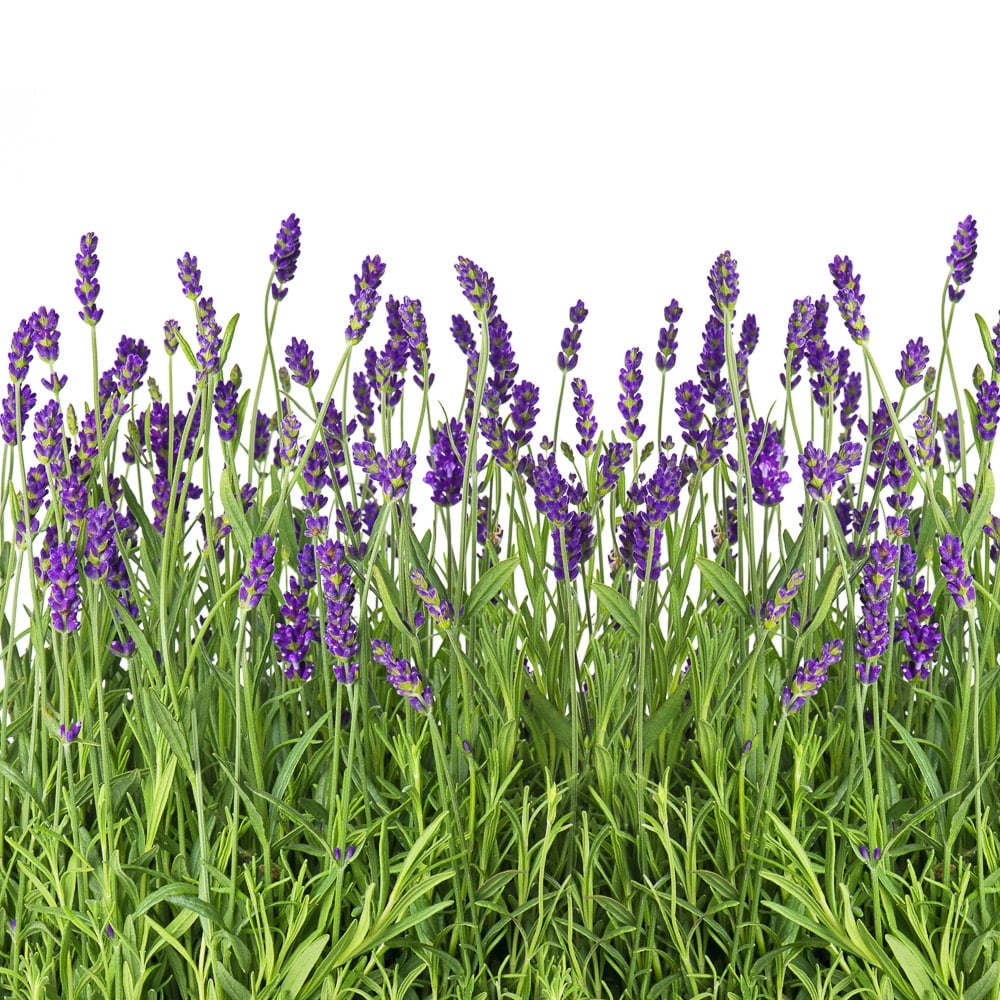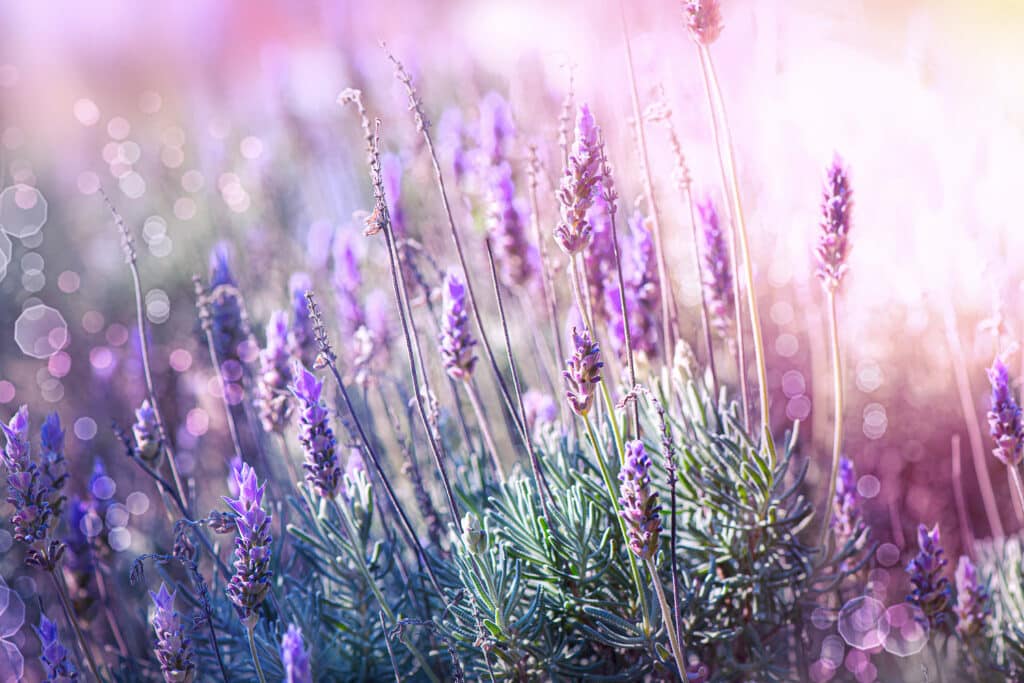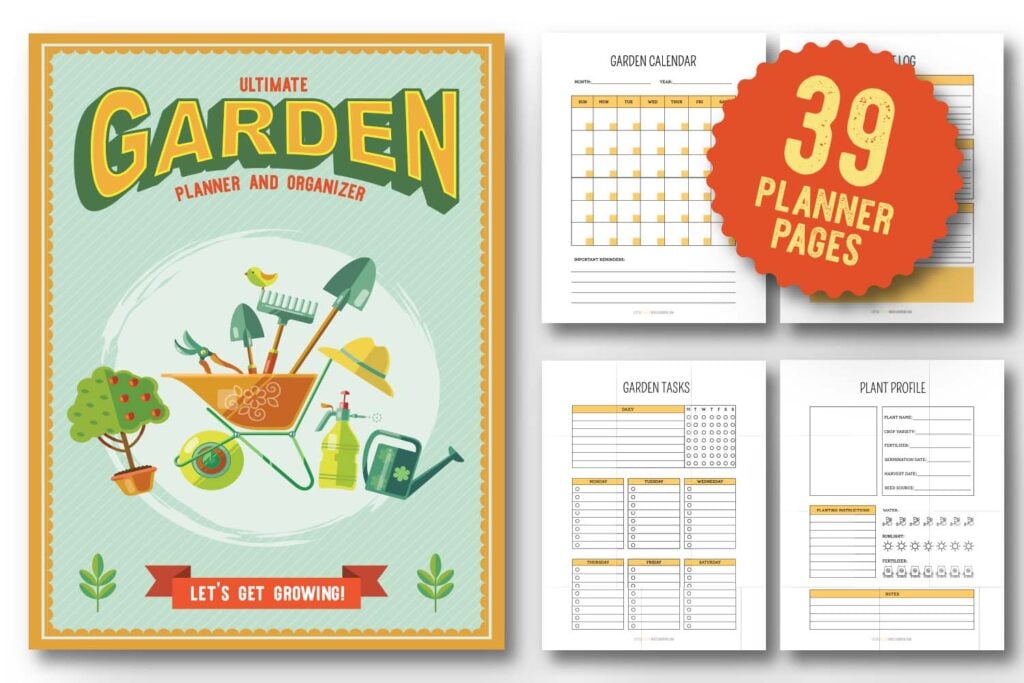When Does Lavender Bloom? How Can I Extend Flowering?
With its delightful fragrance and vibrant blooms, lavender is a beloved flowering plant that captivates gardeners and nature enthusiasts. But when exactly does lavender bloom? The blooming time of lavender can vary depending on several factors, making it essential to understand the specific conditions that influence its growth.
Different varieties of lavender may have different blooming periods, adding to the intrigue and beauty of this versatile plant. Whether you’re growing English lavender, French lavender, or Spanish lavender, each variety has its unique timing for when it bursts into full bloom.

Key Points About Lavenders Bloom Cycle
- Lavender’s blooming time varies depending on climate, soil conditions, sunlight, and maintenance.
- Different lavender varieties have unique timing for blooming.
- Climate, soil drainage, and sunlight exposure are crucial for lavender’s timely blooming.
- Pruning, deadheading, and proper watering practices can influence the blooming cycle.
- To extend the blooming season, choose the right lavender varieties, provide winter protection, and practice good garden care.
Factors Affecting Lavender Blooming
Affiliate Disclosure
This post may contain affiliate links. If you click one and purchase, I may receive a commission at no additional cost. You can read our disclosure policy here.
Climate Plays a Crucial Role
The climate in which lavender is grown plays a crucial role in determining when it blooms. Lavender thrives in regions with a Mediterranean climate characterized by hot, dry summers and mild winters. These conditions mimic the plant’s native habitat and promote optimal growth and flowering.
In such climates, lavender blooms from late spring to early summer, providing a vibrant burst of magenta, purple, white, or dark purple flowers and fragrance to gardens and landscapes.

Soil Conditions Impact Blooming Process
The soil conditions in which lavender plants are added also significantly impact its blooming process. Proper drainage is essential for this plant as it dislikes wet feet. Lavender prefers well-drained soil that allows water to pass through easily, preventing excess moisture around its roots.
The pH level of the soil affects nutrient availability to the plant. Lavender thrives in slightly alkaline soils with a pH range between 6.5 and 7.5.
If your lavender plant sits in the wrong pH soil and has wet feet, its bloom cycle will be impacted. It may also succumb to diseases like root rot and not bloom.
Proper Sunlight Exposure is Essential For Timely Blooms
Lavender requires ample sunlight exposure to bloom successfully. It loves basking in the sun! Ideally, lavender should be planted in an area that receives at least six hours of direct sunshine daily.
Insufficient sunlight can lead to weak or delayed blooming, affecting the overall health and beauty of the plant. Lack of sun will also lead to a lack of lavender oil-producing flowers, reducing scent and blooms.

Pruning and Maintenance Practices Matter
Pruning and maintenance practices can significantly influence the timing of lavender blooms. Regular pruning helps maintain the plant’s shape while promoting new growth and increased flower production. Pruning should be done after flowering or early spring before new growth emerges.
Removing spent flowers (a process known as deadheading) encourages continuous blooming throughout the season by redirecting energy toward producing new buds instead of seed development.
A good Pair of Pruners is a must for every gardener!
#1 best-selling pruners

Watering Frequency and Irrigation Methods
Watering frequency and irrigation methods also play a role in the blooming cycle of lavender. Overwatering can lead to diseases like root rot and hinder blooming, so striking the right balance is crucial. Lavender prefers dry conditions and only requires watering when the top inch of soil feels dried out.
Drip irrigation or soaker hoses work incredibly well for watering lavender as they deliver water directly to the plant’s roots without wetting its foliage excessively. This method helps prevent fungal diseases and ensures efficient water usage.
Understanding the Blooming Seasons of Lavender
Lavender has become a beloved plant for many garden enthusiasts with its delicate purple flowers and soothing fragrance. But when exactly does lavender bloom? Lavender typically has two main blooming seasons: early spring and late spring. Let’s dive into the details to understand more about these blooming seasons and the factors that influence them.
Geographical Location Determines Bloom Time
The specific months when lavender blooms can vary depending on the geographical location. Lavender plants in different regions experience temperature variations, which affect their bloom times accordingly. For instance, lavender may bloom as early as April or May in areas with milder climates like California or southern France.
On the other hand, in cooler regions such as northern Europe or higher altitudes, lavender may begin to bloom in June or July.
Additional Blooming Periods for Some Varieties
While early spring and late spring are the primary blooming seasons for most lavender varieties, some may have additional or extended blooming periods during summer or fall. These varieties include Spanish lavender (Lavandula stoechas) and lavandin (a hybrid of English and spike lavender). These later-blooming varieties can add color to your garden even after the traditional spring bloom.
Regional Climate Patterns Play a Role
Understanding regional climate patterns is crucial for predicting when lavender will bloom in a specific area. Factors such as average temperatures, rainfall patterns, and sunlight exposure all determine the ideal conditions for lavender growth and flowering. Warmer climates with ample sunshine tend to promote earlier blooming, while cooler temperatures with shorter growing seasons delay the onset of blooming.
In Mediterranean climates where summers are hot and dry but winters are mild and wet (such as Provence in France), lavender thrives due to its preference for well-drained soil and plenty of sunlight. The combination of warm temperatures and abundant sunshine during spring creates the perfect environment for lavender to bloom.

Enjoying Lavender Blooms All Year Round
If you’re genuinely passionate about lavender, you may wonder if there’s a way to enjoy its blooms all year round. While it may not be possible in some regions with harsh winters, there are specific steps you can take to extend the blooming season of your lavender plants:
Choose a suitable variety: Some types of lavender, such as English lavender (Lavandula angustifolia), are more cold-hardy than others. Selecting varieties that can withstand colder temperatures increases your chances of enjoying blooms for longer.
Provide winter protection: Consider providing extra protection for your lavender plants during the dormant season in regions with colder winters. This can include adding mulch around the base of the lavender plants or covering them with burlap or frost cloth to shield them from freezing temperatures.
- Learn More: See our complete guide on winterizing lavender plants in colder regions. The post also includes a list of cold hardy lavender varieties and tips for those in areas with no business growing lavender (but we do anyway).
Prune after blooming: Pruning your lavender plants after they finish blooming helps promote healthy growth and encourages more blooms in subsequent seasons. Be sure to trim off any spent flowers and cut back any leggy or overgrown branches.
- Learn More: See our complete guide on pruning lavender for health and robust flowering. Our guide includes pruning tips for different varieties.
By following these tips, you can maximize the blooming potential of your lavender plants and enjoy their beauty throughout the year.
Blooming Periods: Early-Spring and Late-Spring Lavenders
Early spring lavenders are the ones that kick off the blooming season, bringing vibrant colors to our gardens after a long winter. These lavender plants usually start blooming from late winter to early spring months, like February or March. Imagine walking through your garden, and suddenly, you spot beautiful purple flowers in full bloom. That’s the magic of early spring lavenders!
Late-spring lavenders, on the other hand, take their time to make an appearance. Depending on the region’s climate and weather conditions, they generally begin flowering from late spring to early summer, like May or June. While you await their arrival, these late bloomers reward your patience with their stunning display of purple buds and flower spikes.

Early Bloomers: Bursting with Color
Early-spring lavenders are known for their ability to brighten up any garden with their enchanting hues. Their distinctive flower color adds a touch of elegance and charm that is hard to resist.
Popular Early Blooming Lavender Varieties:
- Lavandula angustifolia ‘Hidcote’ (English Lavender)
- Lavandula angustifolia ‘Munstead’ (English Lavender)
- Lavandula angustifolia ‘Lady’ (English Lavender)
- Lavandula x intermedia ‘Grosso’ (Lavandin)
- Lavandula x intermedia ‘Provence’ (Lavandin)
- Lavandula stoechas ‘Anouk’ (Spanish Lavender)
- Lavandula stoechas ‘Madrid Purple’ (Spanish Lavender)
- Lavandula stoechas ‘Kew Red’ (Spanish Lavender)
- Lavandula dentata (French Lavender) .
Late Bloomers: Worth the Wait
While early-spring lavenders steal the show at the beginning of the season, late-spring lavenders have their unique appeal. These varieties take advantage of warmer temperatures and longer days to burst into full bloom, creating a spectacular visual feast.
Late-blooming lavenders offer various colors, from pale lilac to vibrant magenta. As they reach their peak bloom, these flowers transform your garden into a kaleidoscope of colors.

Late Blooming Lavender Varieties:
- Lavandula angustifolia ‘Hidcote Giant’ (English Lavender)
- Lavandula x intermedia ‘Phenomenal’ (Lavandin)
- Lavandula x intermedia ‘Gros Bleu’ (Lavandin)
- Lavandula stoechas ‘Bandera Purple’ (Spanish Lavender)
Late-blooming lavender varieties are generally less common, and the exact timing of their bloom can vary depending on local climate and growing conditions. It’s essential to check with local nurseries or experts for more information on specific late-blooming lavender varieties suitable for your region.

Extending Lavender’s Flowering Time: Tips and Tricks
You can employ several easy tips to prolong the blooming period of lavender. By implementing these strategies, you can enjoy the beauty and fragrance of lavender flowers for an extended period throughout the season.
Deadheading and Pruning Lavender
One effective way to promote continuous bloom in lavender is by deadheading spent flowers. This process involves removing the faded or wilted blooms from the plant. By doing so, you encourage new growth and stimulate the production of fresh flower buds.
Regularly deadheading your lavender plants will help maintain a steady supply of vibrant blooms throughout the growing season.

Applying Organic Fertilizers Rich in Phosphorus
Another technique to extend lavender’s flowering period is by providing adequate nutrition through organic fertilizers. Choosing fertilizers that are rich in phosphorus can significantly benefit lavender plants.
Phosphorus promotes root development and enhances flower production. Applying organic fertilizers according to package instructions will give your lavender essential nutrients, resulting in prolonged blooming.
Regular Weed Removal
Weeds not only detract from the aesthetic appeal of your garden but also compete with lavender plants for vital nutrients. Regularly removing weeds around your lavender plants ensures optimal blooming conditions. Weeding helps prevent nutrient competition and nourishes your lavender plant for sustained flowering.
Mulching with Organic Materials
Mulching is vital in regulating soil moisture levels and maintaining favorable conditions for blooming lavenders. Applying a layer of organic materials such as straw or wood chips around your lavender plants helps retain moisture in the soil while reducing weed growth.
Mulching also provides insulation during extreme weather conditions, protecting roots from temperature fluctuations that could hinder flowering.
Note: Heavy mulching can prevent reseeding, so if you want your lavender to spread, use compost as your mulch.

Consistent Watering Practices
Watering is a critical factor. Consistent watering ensures that your plants do not experience drought stress or become overwatered. Lavenders prefer well-drained soil, so it is essential to balance keeping the ground moist and avoiding waterlogged conditions. A deep watering once a week is generally sufficient, but adjust the frequency based on weather conditions and the specific needs of your lavender variety.
Long-Flowering Lavender Varieties: Duration of Bloom
You can’t get enough of those beautiful blooms if you’re a lavender lover like me. But have you ever wondered when lavender blooms and how long it lasts? Certain lavender varieties are known for their extended blooming periods, allowing you to enjoy their vibrant colors and delightful fragrances for an extended time. Let’s explore some of these long-flowering lavender varieties and discover the duration of their flowering time.
- Lavandula angustifolia ‘Hidcote’ blooms from late spring to early fall
- Lavandula x intermedia ‘Grosso’ blooms from midsummer to early fall
- and Lavandula stoechas ‘Anouk’ blooms from spring to summer
Consider factors such as bloom duration, color preference, and growth habits when selecting your lavender varieties.

Summary: Mastering the Blooming Cycle of Lavender
Knowing the factors that affect its blooming, understanding the different blooming seasons, and discovering tips to extend its flowering time, you’re well-equipped to cultivate a vibrant lavender garden.
Now, it’s time for you to put your knowledge into action! Get out there and experiment with different lavender varieties, try out various techniques to extend their blooming period, and create a stunning display of color and fragrance in your garden.
Learn More About Growing Lavender:
We have many articles about growing and caring for lavender to help get you started:
- The Best Lavender Companion Plants For Your Garden
- How To Grow Lavender In Pots Successfully!
- What To Do With Dried Lavender This Harvest Season
- How To Dry Lavender (Preserving Methods And Tips)
- How to Harvest Lavender
- When to Plant Lavender for Best Results
- Growing Lavender Plants Indoors
Frequently Asked Questions
How often should I water my lavender plants?
Lavender plants prefer dry soil conditions, so it’s important not to overwater them. Water deeply once every two weeks during the growing season, allowing the soil to dry out between watering sessions. Be sure to adjust the watering frequency based on weather conditions and rainfall.
Can I grow lavender indoors?
Yes, you can grow lavender indoors if you provide it with adequate sunlight (at least six hours per day) and well-draining soil. Choose compact varieties for container gardening and place them near a south-facing window or under grow lights.
When is the best time to prune my lavender plants?
The best time to prune lavender is in early spring or after flowering. Pruning helps maintain plant shape, encourages bushier growth, and prevents leggy stems. Trim back about one-third of the plant’s height, careful not to cut into old wood where new growth won’t emerge.
How do I harvest lavender flowers?
Wait until at least half of the flower buds have opened to harvest lavender flowers at their peak freshness. Cut the stems just above the leaves, leaving a few inches of stem attached. Bundle the stems and hang them upside down in a cool, dry place.
Can I use lavender flowers for cooking?
Absolutely! Culinary lavender varieties are safe to use in cooking and baking. Use lavender flowers sparingly, as they have a strong flavor. They can be infused into oils, used as a seasoning in savory dishes, or added to desserts and beverages for a unique floral twist.





